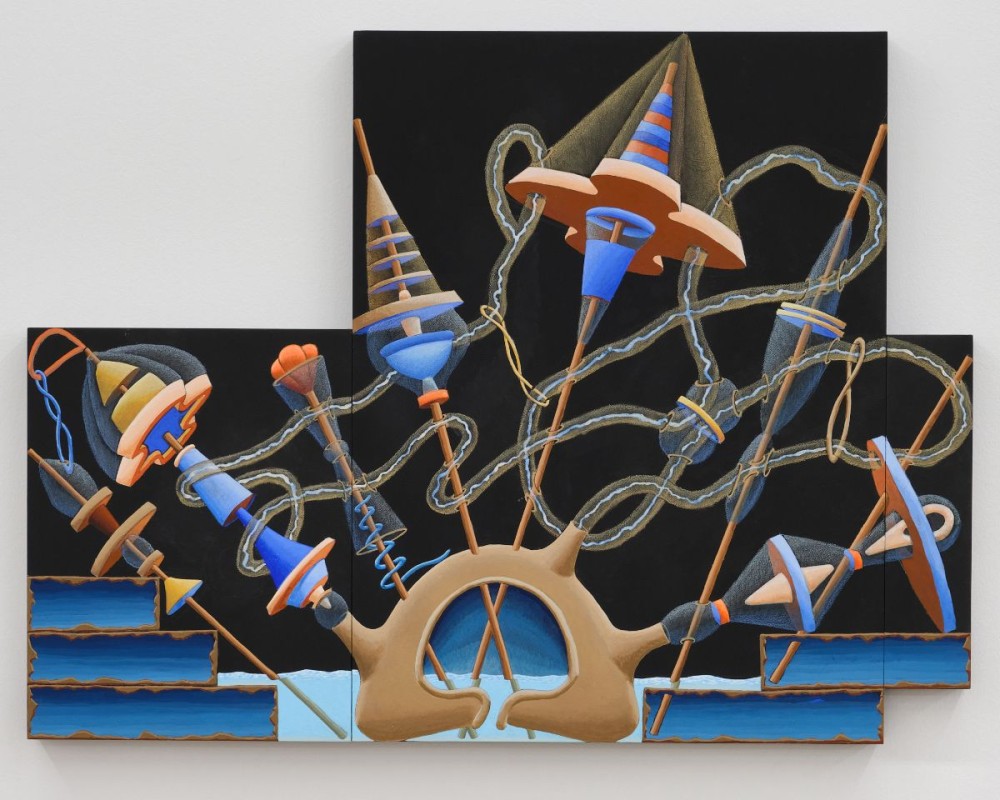
Bernard Cooper: An Insomniac's Guide to the Night
Please join us this Sunday, June 16 from 3-6 pm to celebrate the opening of concurrent solo exhibitions from Joshua Aster and Bernard Cooper.
Bernard Cooper has branched into fantastical morphology for his current body of work. (Morphology is that area of biology concerned with the form and structure of animals and plants.) In his compositions we find curious takes on filaments and tentacles. Tendrils and cilia. Seed sacs, tails, and leaves. Trumpets, bells, tubes, and fruit. Eggs, sperm, pods, and capillaries, all in a slow dance of graceful interpenetration. There's an erotic elision of plant and animal here (if you find such a melding erotic, and I do), a parade of ghostly organs, hints that we're all filled with eerie, almost garishly-colored plumbing.
The forms in this arresting work are influenced not only by botany, physiology, and microscopy, but by sex toys, windsocks and fishing lures. Additionally, they reference a plague. Cooper cites an "amazing, disturbing" cover of Time magazine (August 12, 1985) as one seminal image, which featured a photo of the AIDS virus, magnified 135,000 times, destroying a T cell. On seeing the form the virus took, Cooper remembers thinking, "it looked like a mythical entity."
Cooper says the pieces' black backgrounds give him a sense of images rising out of the void, "There's an unfathomable space from which these forms are emerging." The creaturely, fanciful, undulating forms do seem to be swimming up from some primordial place, perhaps an original biblical darkness...'And the earth was without form, and darkness was on the face of the deep.'
These kinky versions of what we and our fellow inhabitants of this planet are made of are rendered precisely. Their forms are motile and elegant-grotesque. Alluring yet also disconcerting, Cooper's alien but weirdly familiar entities are fictive riffs on structures that allow us to mate, propagate, reach, eat, breathe, and feel. Perhaps they also remind us of who we used to be evolutionarily, eons ago, when we were dreaming ourselves into being.
—Amy Gerstler